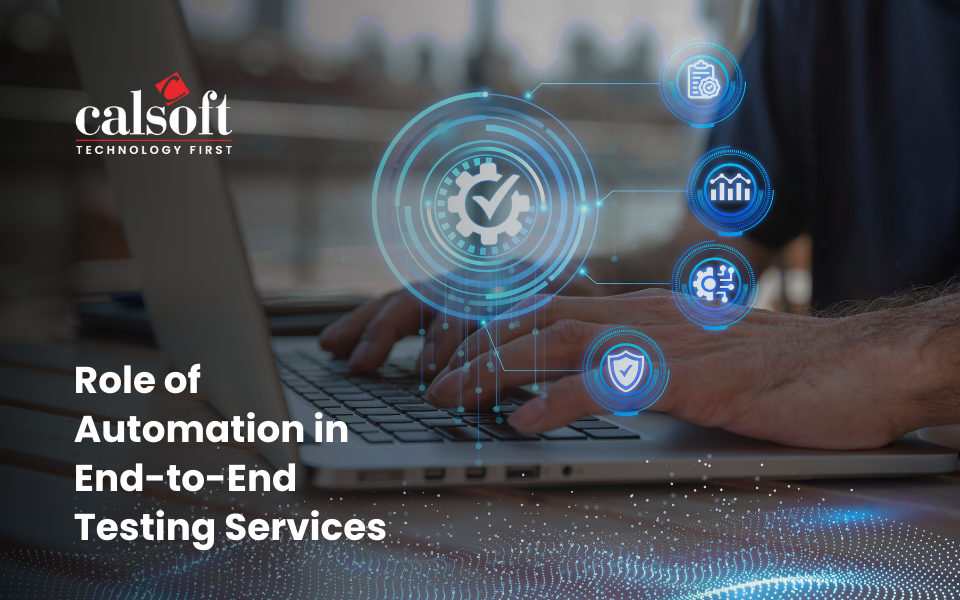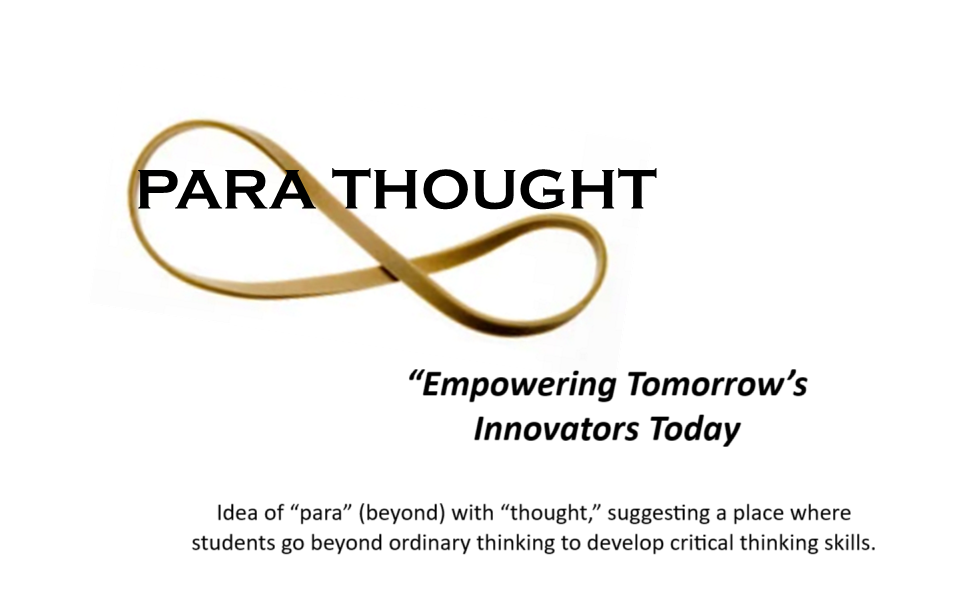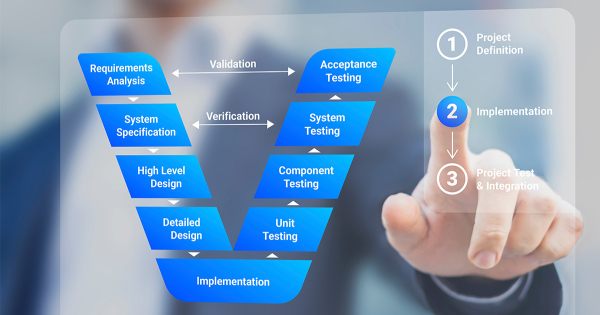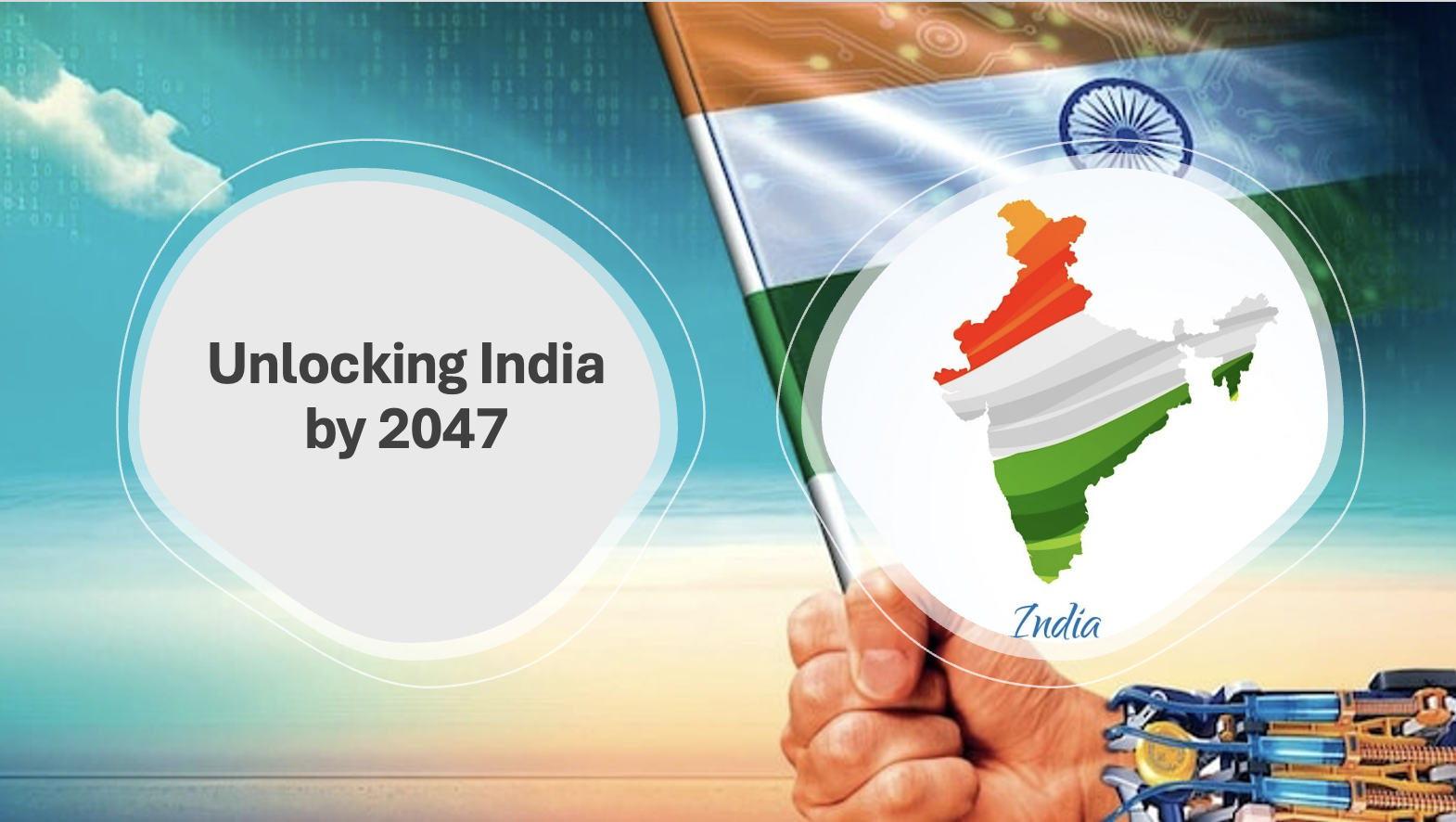“The next 5 years will be more disruptive than the last 15. This is NOT business as usual. A lot of technology that came in three years ago doesn’t work anymore.”
- Saul Berman. Chief Strategist & VP, IBM
This is the third of the multi-part blog series titled ‘DIGITAL ENTERPRISE TRANSFORMATION, INDIA PARADIGM’ and covers the State of Technology Adoption in India from the standpoint of technology adoption trends in terms of mainstream technologies such as,
- 3D printing/Additive manufacturing
- Augmented Reality/Virtual Reality/Mixed Reality (AR/VR/XR)
- Artificial Intelligence/Machine Learning (AI/ML)
- Big Data Analytics (BDA)
- Blockchain (including Distributed Ledger Technology, Crypto/Digital Currencies, and Non-fungible tokens (NFTs))
- Cloud/edge computing
- Cybersecurity
- Industrial robotics
- Internet of Things (IoT) (including Industrial IoT)
- Robotics Process Automation (RPA), etc.
It also encapsulates the position of Indian enterprises in terms of adopting nascent technologies, such as,
- Connected humans technology
- Connectivity technologies (5G/6G, WiFi6, etc.)
- Digital twins
- Nanotechnology and biosynthetic
- Quantum computing
- Verse of Things (VoT)
- Web 3.0, etc.
My previous blog (DIGITAL ENTERPRISE TRANSFORMATION, INDIA PARADIGM: DIGITAL TRANSFORMATION CONTRACTS AND OUTSOURCING TRENDS) set the context for my present and forthcoming blogs which focus on detailing the key findings on digital enterprise transformation from an Indian end-user enterprise standpoint, culled out from the NASSCOM-Avasant “Digital Enterprise Survey” conducted in May’2022. Based on the results derived from the survey, NASSCOM and Avasant formulated the “The Digital Enterprise Maturity Index,” which forms an integral part of the “DIGITAL ENTERPRISE MATURITY 3.0: Boosting Business Resilience through Technology” Report published in July 2022.
KEY TAKEAWAYS:
1. In FY2023, ~81% Indian enterprises are anticipated to increase investments across major mainstream technologies, such as AI/ML, BDA, Cloud/Edge computing, Cybersecurity, IoT, AR/VR/XR, RPA, etc. as compared to ~68% of their global peers
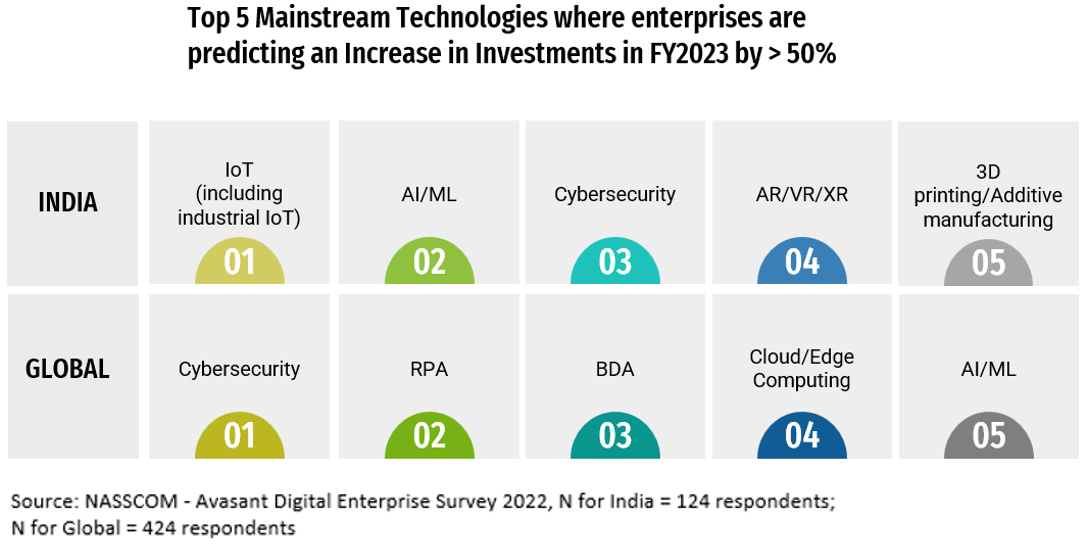
As shown in the table above, our survey findings indicate that in FY2023, while for Indian enterprises, the top 3 mainstream technologies in which they are anticipating an increase of more than 50% in investments, are IoT (including Industrial IoT), AI/ML and Cybersecurity, global enterprises are expected to ramp up spending by >50% in the following 3 mainstream technologies – Cybersecurity, RPA, and BDA.
2. In FY2023, ~60% Indian enterprises are considering either running a Proof of Concept (PoC), investing resources post-PoC success, or increasing existing investments in emerging technologies (such as Web 3.0, Quantum Computing, Digital Twins, etc.), as compared to ~55% global enterprises contemplating similar decisions
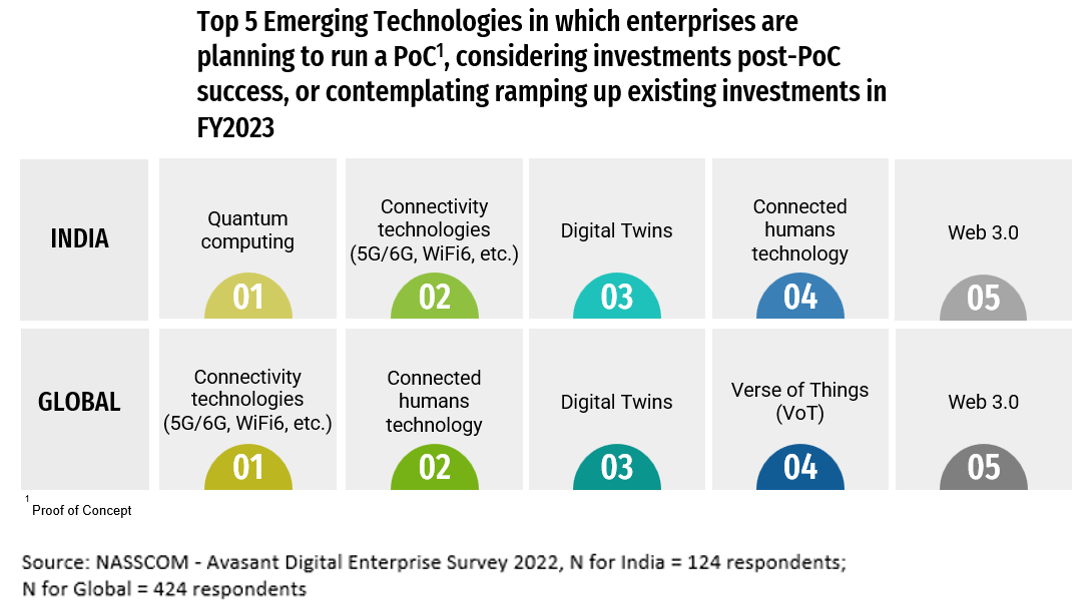
As depicted in the table above, our survey findings show that in FY2023, Connectivity technologies (5G/6G, WiFi6, etc.) and Digital Twins will both feature in the list of top 3 emerging technologies for Indian as well as global end-user enterprises, in terms of planning to run a PoC, deliberating investments post-PoC success, or considering augmenting existing investments in such technologies. However, Indian end-user enterprises seem to indicate a greater inclination towards investing in Quantum Computing in terms of running a PoC, investing post-PoC success or ramping up existing investments, as compared to their global peers, as this technology is expected to be the foremost priority for them among other prominent nascent technologies.
3. Overall, top 5 mainstream & emerging technologies in which Indian enterprises are planning to increase investments in FY2023P are as follows:
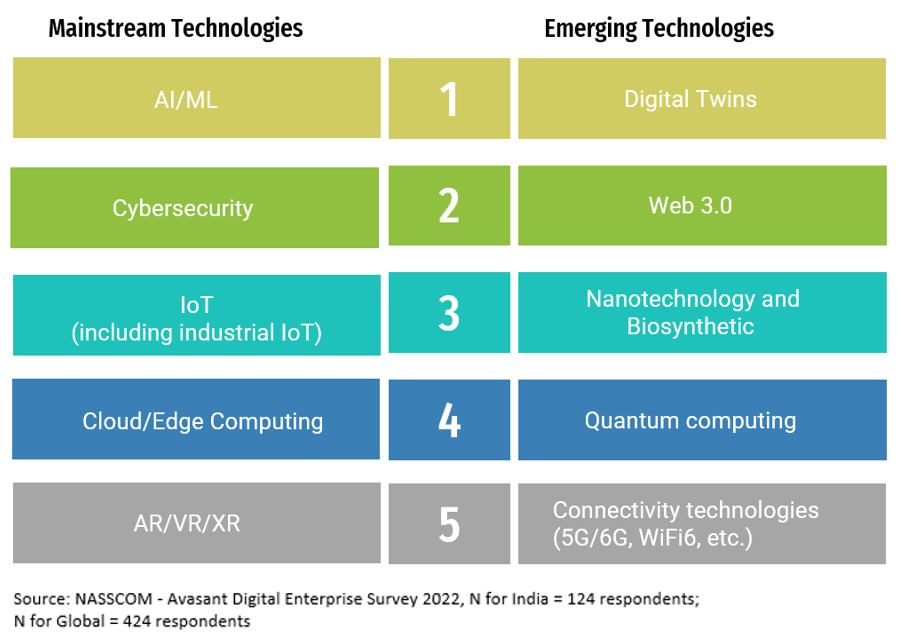
Thus, Indian end-user enterprises are embracing a convergence of mainstream and nascent technologies to build upon the multitude of benefits that ensue digital transformation such as increased efficiency, reduced costs, greater revenue growth, more effective and efficient operating models, enhanced flexibility, etc.
Some illustrative use-cases of the successful deployment of the above-mentioned mainstream and emerging technologies by Indian end-user enterprises are as follows:
- In July 2022, Apollo Hospitals entered into a tie-up with Singapore-based ConnectedLife, leaders in application of motor-state diagnostics, to combine Apollo’s AI-based web tool - Artificial Intelligence based Risk Score (AICVD) - with ConnectedLife’s digital solutions for wellness, condition management and other health-focused applications. The AICVD tool can anticipate the risk of a cardiovascular disease which enables healthcare providers to deliver pre-emptive and preventive care for at-risk individuals and commence intervention at a stage wherein they are to be able to prevent/control severe repercussions of the disease. The partnership with ConnectedLife has further facilitated the process of empowering healthcare providers with a comprehensive tool to assess risk and deliver top-class clinical results.
- The Future Group has a Proprietary AI/ML platform ‘Tathastu’ for streamlining and enhancing customer operations and additionally, integrating demand as well as sales & operations planning for supply chain performance improvement.
- Aditya Birla Group developed a VR-based training module that ensures employee safety in its chemicals division. Further, the enterprise has also deployed AI-based authorization tools for facial recognition, quality control, and safety of its workforce and workplace.
- Bharat Forge has launched Health Risk Monitoring Systems (along with Blackstraw) consisting of a touchless thermal screening system and AI algorithms running on surveillance CCTV cameras to observe and control human behaviour.
- In the light of growing demand for work-from-home (WFH), Tata Steel is in the process of piloting projects that can help create Digital Twins of their factories and blast furnaces in a way that the control room is segregated from the plant area - a separate zone where people can either come in physically or even operate from home. This makes conducting operations outside the factories plausible and offers the flexibility of remote working to factory operators and blue-collar employees as well. Furthermore, the company has developed Digital Twin Models for sinter plants, utilizing AI techniques to achieve benchmark levels in CO2 emissions and contribute towards sustainability.
- Airtel has collaborated with Apollo Hospitals and Cisco to create a 5G Connected Ambulance that completely transforms access to healthcare and saves lives in emergency cases. This customized state-of-the-art 5G Connected Ambulance is equipped with the latest medical equipment, patient monitoring applications, and telemetry devices that convey the patient health data to the hospital in real-time. Additionally, the Ambulance is also stocked with onboard cameras, camera-based Headgear, and Bodycams for paramedic staff, which enables it to act as an extension of an emergency room in a time-sensitive situation when a critical patient might be enroute to the hospital.
- Reliance, in February 2022, invested $ 15 Mn in a Silicon Valley-based deep-tech startup named Two Platforms Inc., to leverage their AI/ML, Augmented Reality, Metaverse, and Web 3.0 capabilities for expediting the digital transformation initiatives of its brand Reliance Jio.
In my upcoming blogs, we will analyze the key trends in areas such as business process digitalization, distribution of workflows on Cloud, digital talent, hybrid work models, various stages of digital maturity and projected outlook for FY2023 with respect to Indian end-user businesses.
For more information on Digital Transformation and Digital Enterprise Maturity, please refer to the report downloadable at the following links:
NASSCOM Website: https://nasscom.in/knowledge-center/publications/digital-enterprise-maturity-30-boosting-business-resilience-through
NASSCOM Community: https://community.nasscom.in/communities/digital-transformation/digital-enterprise-maturity-30-boosting-business-resilience
Earlier versions of the report can be downloaded from the following links:
A NEW ORDER OUT OF CHAOS-BUILDING A FUTURE READY ORGANISATION-https://community.nasscom.in/communities/digital-transformation/new-order-out-chaos-building-future-ready-organisation
REIMAGINING INDIAN ENTERPRISES' TECH LANDSCAPE IN A DIGITAL-FIRST WORLD – A NEW ORDER OUT OF CHAOS- https://community.nasscom.in/communities/digital-transformation/reimagining-indian-enterprises-tech-landscape-digital-first
DEFINING THE DIGITAL ENTERPRISE - MAR 2020 -https://community.nasscom.in/communities/digital-transformation/defining-the-digital-enterprise-mar-2020.html
Sources:
- DIGITAL ENTERPRISE MATURITY 3.0 - Boosting Business Resilience Through Technology
- NASSCOM- Arthur D Little-5G-Unfolding India's Era Of Digital Convergence
- The NASSCOM AI Adoption Index
- Business Standard Press Article
- Times Now News Article
- https://blog.tatasteel.com/the-journey-of-iron-making/















